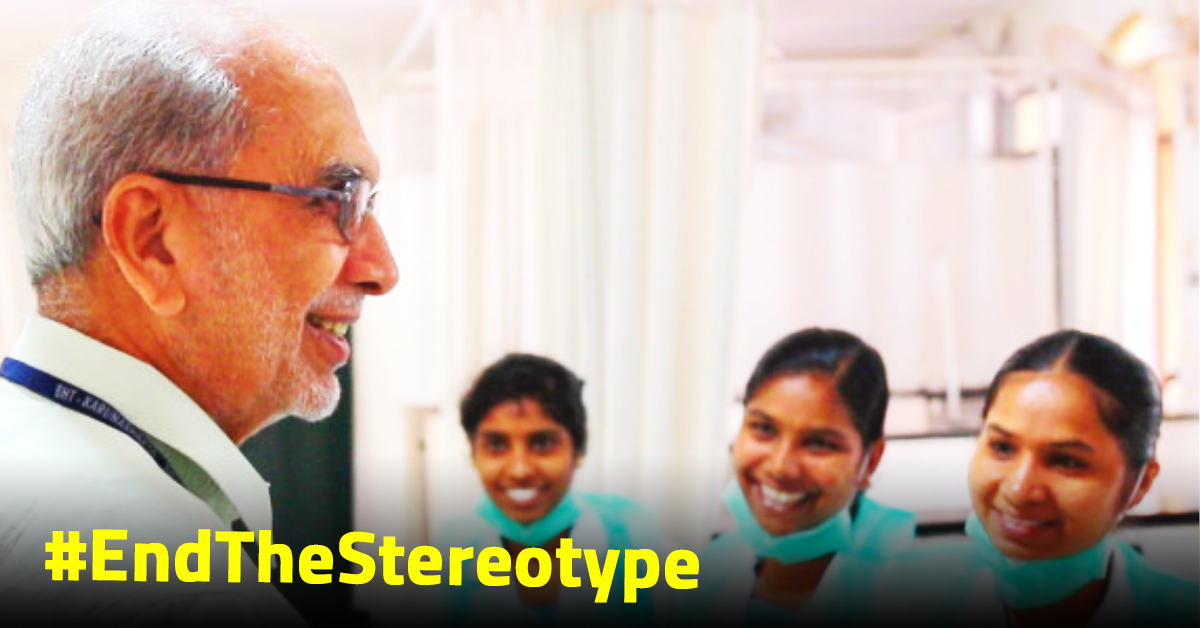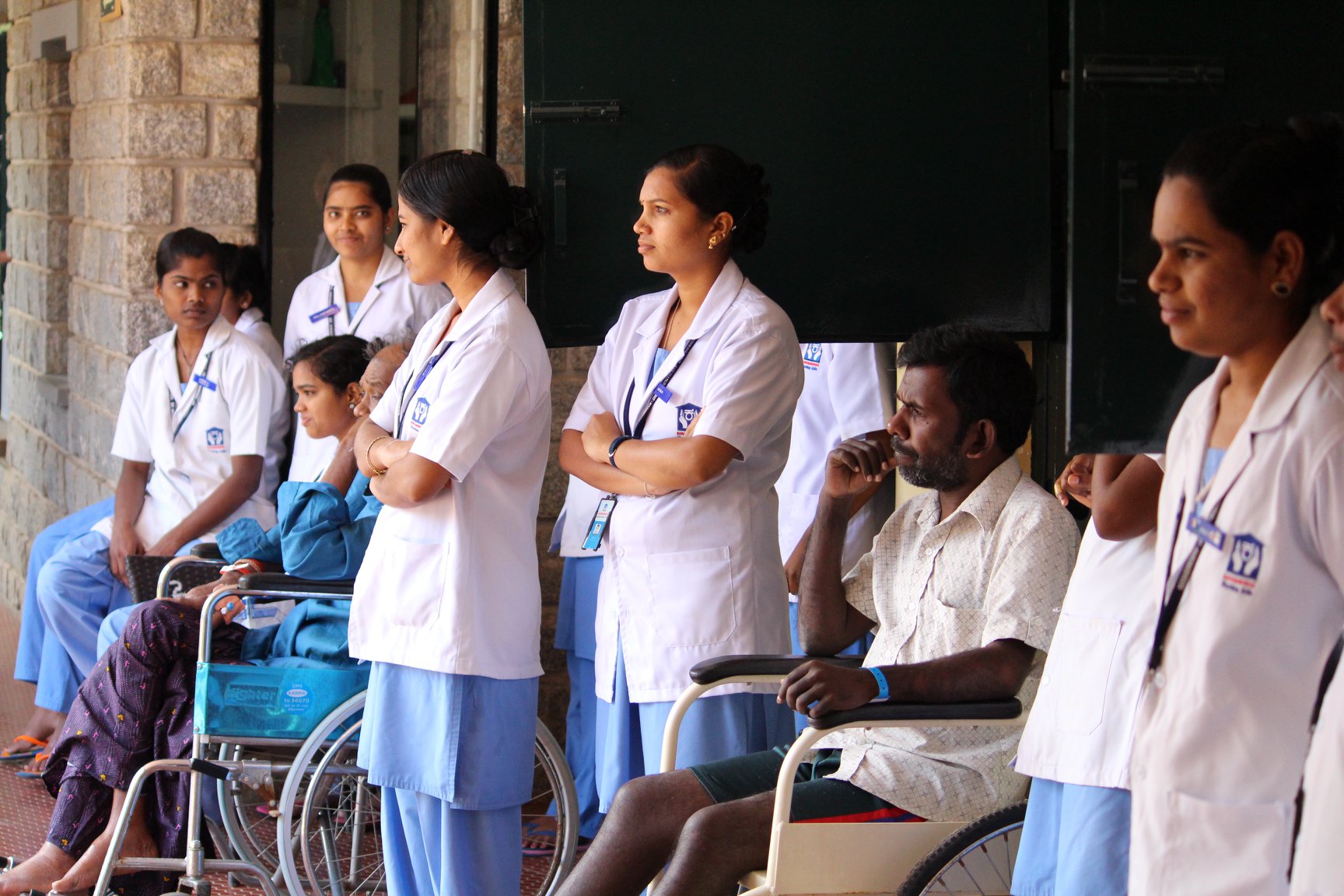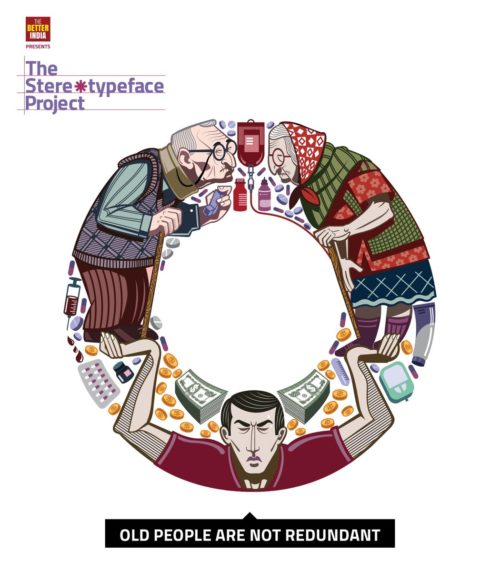82-YO Helps Over 23,000 Terminally Ill People, Breaking All Stereotypes About the Elderly
The aged do not need our pity and should not suffer our neglect—their experience, knowledge of the world, and company is something to be cherished.

Karunsharaya, started by 82-year-old Kishore Rao, is possibly India’s first residential palliative care centre for the terminally ill. It has been functional for two decades now and has brought solace to over 20,000 cancer patients during their last days.
How did it all start?

“The genesis of this entire thing stems from a personal loss—my mother passed away from cancer many years ago, and it stayed somewhere in my head. It was with that intent that I started working towards providing support and palliative care to terminally ill cancer patients,” he told The Better India.
In 1986, Rao set up the Karnataka branch of the Indian Cancer Society (ICS) to spread awareness about cancer. He took time off from his corporate job, and not only created awareness and organised screening camps, but also helped people who needed support.
After three decades of being in a corporate role, Rao voluntarily retired in 1992 and decided to devote himself to this cause. He focused on early detection, awareness, and palliative care.
At that time, there was no organised effort or focus on palliative care, and the government too was not of much help. Only two years later did Rao find other people willing to help patients in the last stages of cancer. The Indian Cancer Society and the Rotary Club of Indira Nagar in Bengaluru helped him set up public charitable trust, Bangalore Hospice Trust.
They started with home visits. A team consisting of a nurse and a counsellor went to the patient’s home in an auto rickshaw to provide them with help and assistance.

“I had gone to Mumbai for some work and was looking for organisations that might come forward and support the vision. I landed up at the Tata Head office at Bombay House. With no prior appointment, I was ready to be turned away, but as luck would have it, I was able to speak to the Executive Director and went on to spend a good two hours with him,” Rao says.
Within a week, they had Rs 10 lakh towards their cause and more support to go on. The retired Chief Secretary of Karnataka, now part of the Trust, got the government to give them land on a long lease basis to build the infrastructure for a hospice. The plan was created by the late Tara Chandavarkar, the city’s then top architect, born from a conversation over a social dinner. Chandavarkar grilled him about the hospice, and satisfied with his intent, she agreed to design the plan completely for free.
Finally, on 1 May 1999, the building was ready as a 50-bed in-patient facility, and the first patient came in. They have since affixed two more wards and can accommodate up to 73 patients.
Sadly, on average, they lose two patients every day, since the patients only come in during their final stages. But every wish of the patients is fulfilled.
“We have had people request at night for biryani to be made and served. Given how fragile their condition is, in most cases, we cannot tell them that it will be added to the menu tomorrow. So we ensure that we send someone to get it or have it made and served immediately. It could well be the last meal they have.” Rao says, adding that this is something they take very seriously.
This is no easy job since Rao has to see the sadness and pain of every patient. “The fact that they all go with dignity and with immense peace is what I derive my strength from,” he says.
Aged people in our society are seriously sidelined—even by their own kids.

In India alone, close to 100 million aged suffer from verbal and physical abuse. That’s half the aged population in the country. Beyond the age of 65, even if they’re fit and fine, there aren’t many opportunities, especially in terms of employment, to keep them busy.
And there is an unnecessary stigma to old age homes.
The aged do not need our pity and should not suffer our neglect—their experience, knowledge of the world, and company is something to be cherished, even if it comes with increased medical care or cost. Human life cannot be measured simply by how ‘useful’ that person is economically, and our aged deserve better.
#EndTheStereotype
This story is part of The Stereotypeface Project, an initiative by The Better India that challenges 26 stereotypes, which continue to exist even today. We are showcasing these stereotypes through all the letters of the English language alphabet.
Stereotypes exist everywhere — they are passed down over generations. Instead of embracing and celebrating what makes us unique, we stand divided because of them!
We’ve unconsciously learned to stereotype, now let’s consciously #EndTheStereotype.
Visit www.stereotypes.in to know more about the campaign and support the effort!
How can you support this campaign?

1. Follow this thread on Twitter or Facebook
2. Re-Tweet / Re-share the stereotypeface that you would like to put an end to
3. Use #EndTheStereotype and tag @TheBetterIndia
(Edited by Shruti Singhal)
Like this story? Or have something to share? Write to us: [email protected], or connect with us on Facebook and Twitter.
If you found our stories insightful, informative, or even just enjoyable, we invite you to consider making a voluntary payment to support the work we do at The Better India. Your contribution helps us continue producing quality content that educates, inspires, and drives positive change.
Choose one of the payment options below for your contribution-
By paying for the stories you value, you directly contribute to sustaining our efforts focused on making a difference in the world. Together, let’s ensure that impactful stories continue to be told and shared, enriching lives and communities alike.
Thank you for your support. Here are some frequently asked questions you might find helpful to know why you are contributing?


This story made me
-
97
-
121
-
89
-
167













